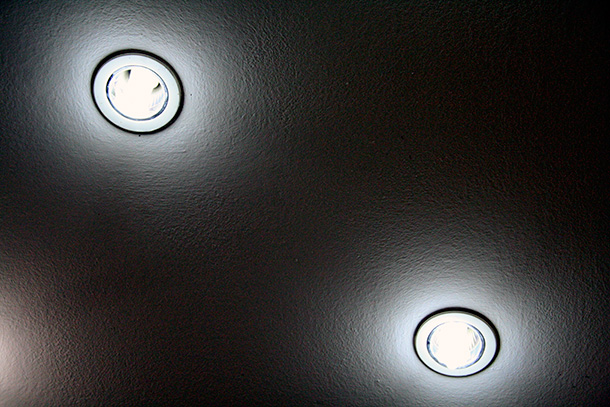Downlights are a popular choice for home lighting because of their sleek and elegant look, and the fact that they can make any room appear bigger. They are a wonderful option for just about anywhere in the house – living areas, kitchens, bedrooms, and bathrooms – because they rain light just where it is needed. They also avoid unnecessary light pollution and glare, and make for a clean, minimal appearance.
If you are thinking of installing downlights for your home, here are some things that you should know:
Types of Downlights
There are mainly three types of downlights from which to choose – and they differ in the type of bulbs used. The three kinds are:
- Halogen downlights
- CFL downlights
- LED downlights
In order to decide which one is the right choice for your home, let us look at each option in detail.

Halogen Downlights
The warmth and brightness of the glow and the compact size of the halogen downlights have made them a popular choice for households across Australia.
When they first became available years ago, they revolutionised home lighting – it was a move away from the large dangling light bulbs and chandeliers towards compact, modern lighting. Even now, they are readily available at lower costs, with dimmers that can help lower the energy consumption.
But halogen downlights are certainly not the most energy-efficient choice. Their operation, where light is produced by heating up a filament, produces a lot of heat that is wasted. This energy wastage adds a lot to your energy bills, especially when multiple downlights are used. Also, the use of halogen downlights in a room can cause a significant increase in the temperature of the room – adding to the cooling costs in summer.
CFL Downlights
Another option for downlights is compact fluorescent lamps (CFLs) that operate at a lower temperature and are more energy-efficient. While the initial cost of these downlights is higher than that of halogen downlights, if you consider the operating costs as well, these might be cheaper options.
CFL downlights, however, do not produce the same quality of light produced by halogen ones, and you will need more CFLs per room to produce light of the same intensity. They take some time (one or two minutes) to warm up and reach their full brightness. If they are turned on and off frequently, they burn out sooner.
Another factor that reduces their appeal is that they are larger, and do not produce the same compact effect that both halogen and LED downlights produce.
LED Downlights
To make full use of the benefits of downlights, choosing energy-efficient options like LED downlighting is important. Extremely compact and using just one-sixth the power of a halogen downlight, the LED downlight is truly a safe option for your home.
LED downlights are also very long-lasting and operate at lower temperatures than a halogen light – so they are cooler to touch and have much lower fire risks.
In addition to the power savings due to lower energy use, LED downlights offer another advantage. Due to their lower operating temperatures, LED downlights do not heat up the room, but produce constant, warm light throughout the year. They do not emit any ultraviolet or infrared radiations, and are a ‘greener’ choice – because of less greenhouse emissions.
The initial cost is the only factor that stops many homeowners from switching to LED downlights. But in recent years, the price has come down considerably, and there are various options available from different retailers.
Even with the high initial cost, LED downlights are certainly the more cost-effective choice when you consider the fact that LED lights usually last more than 30,000 hours.
Downlighting and Fire Danger
Improper downlight installation (usually halogen downlights) is a common cause for house fires in Australia. This is because the halogen lights operate at very high temperatures (up to 370°C). They can easily cause a fire to happen due to the presence of ceiling insulation, timber, leaf debris or wiring in the roof space. These fires often go undetected by smoke alarms, as they occur above the level of the alarms.
To prevent chances of fire:
- Downlights must be installed away from timber beams or other structural members.
- The lights must not be covered by ceiling insulation that may be ignited.
- If loose thermal insulation is used, fire-resistant barriers must be used around downlights.
- Install smoke alarms in the roof area to detect fires there.
- Make sure that the downlights you select meet the relevant Australian standards.
Most fires are caused by halogen downlights, so simply switching to LED downlights can reduce the fire danger considerably. Always get downlights installed by licensed electrical contractors.
At Everest Electrical, downlight installation is part of the services we provide for our clients in Sydney’s North Shore and Northern Beaches. We welcome your call on 0410 229 139 to discuss any electrical jobs including installation of smoke alarms and complete home rewiring.

